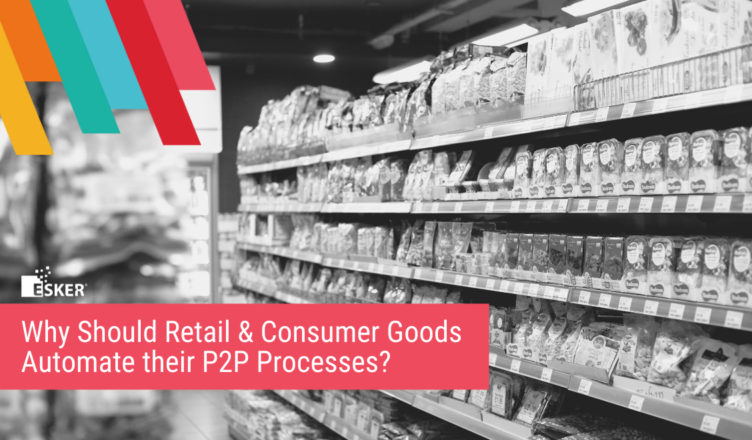For most retail and consumer goods businesses, the procure-to-pay (P2P) cycle has been a thorny issue for a long time. The P2P processes still lead to misunderstandings, paperwork and are often stressful. It should come as no surprise that automating the key steps is essential to regaining control and optimising the process.
In this post, we’re going to explore the P2P process in more detail and discuss why digital transformation should be a priority.
What is the P2P cycle?
Simply put, P2P is an umbrella term for the process of requisitioning, ordering, purchasing, receiving and paying for goods or services. It’s a standard component of business operations that typically involves multiple stakeholders, depending on the size and structure of the company.
Enabling a customer-focused approach through P2P automation
The ability to predict change, establish a resilient supply chain and become more customer-focused are key elements in building a modern, successful business.
Operating with efficiency and agility are key for retailers that want to succeed in an increasingly competitive business landscape.
Putting customers at the heart of any business no longer means a singular focus on front-end processes, but instead requires improving the back-end operations. Optimising the P2P processes with automation ensures that the customer-facing operations function smoothly.
A recent report on the subject by Forrester confirms that “as firms become more customer-obsessed, the pace of change accelerates, reaching across the enterprise, its partner networks, and its customers’ ecosystems. As a consequence, the IT operating must itself change with increasing speed, including tech services, capabilities, structure, governance, and leadership.” (Enable Customer Obsession With A Future Fit Technology Strategy, Forrester Research, Inc., August 10, 2021)
Esker’s AI-driven solutions offer visibility and operational efficiency while decreasing time and procedural steps, thereby
- extending control and visibility
- strengthening supplier relationships
- increasing productivity
- engaging employees
The impact of COVID-19 on the retail & consumer goods industry
The challenges for the retail and consumer goods industry brought on by the COVID-19 crisis are manifold: from ensuring the health & safety of staff to supply chain disruptions, cash flow uncertainty and intense fluctuations in consumer demands — all of them underline the importance of maintaining agility and visibility over business processes.
Disruptions in the supply chain have caused many retailers to diversify and turn to more local suppliers. By favoring regional providers, retailers can minimise the risks that often accompany fragile international supply chains. Close collaboration with suppliers furthermore enables retailers to create new and innovative products that address changes in demand and cost structures.
Careful planning for business continuity, the resilience of the digital ecosystem, the flexibility of their supply chain and stable relationships with their suppliers provided by visibility over business processes can equip retailers with the agility to not just react to events but also proactively steer their organisation towards flexible and efficient operations.
Why digital transformation is essential to pivot and scale
Digital transformation is more vital today than ever before. The drastically changing rules of the markets in the COVID-19 era make digital transformation a necessity. To stay competitive in this environment, businesses need to make an effort to adapt to the “new normal”. According to a Forrester report on the importance of business adaptability, “the pace of change has never been faster, and it will continue to accelerate. The most successful organisations will capitalise on this rapid change. Forrester finds that firms with a future-fit tech strategy — most importantly, a strong, adaptive foundation — succeed in the midst of ongoing change by reconfiguring their core business concepts and creating and delivering value to meet customers’ emerging needs and expectations.” (Adaptive Firms Grow Three Times Faster Than Their Industry Peers, Forrester Research, Inc., April 12, 2021)
Currently, only 15% of companies make digital transformation a priority. If predictions are correct, a majority of companies will be moving technological transformation into every part of their business. (Predictions 2021: Digital Business, Forrester Research, Inc., October 29th, 2020). This advancement enables fluid and swift supply chains and good vendor relationships, thereby ensuring successful business operations for retailers. Streamlining the back-end processes will increase efficiency and maximise profitability.
The time to automate is now and we’re here to help you navigate it all.
Want to learn more about how digital transformation can help you reach your business goals? Check out Esker’s Procure-to-Pay solution.
Written by, Catherine Dupuy-Holdich


